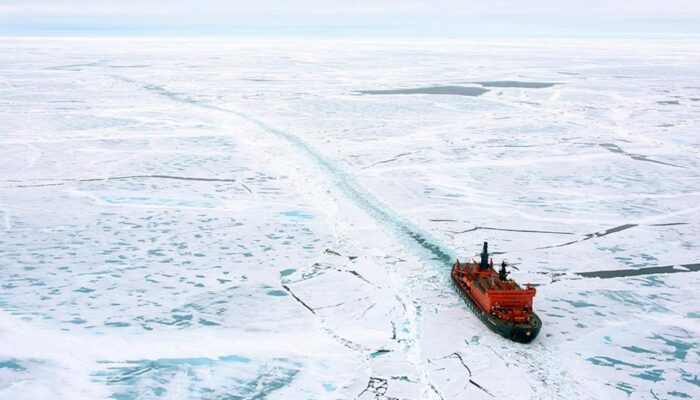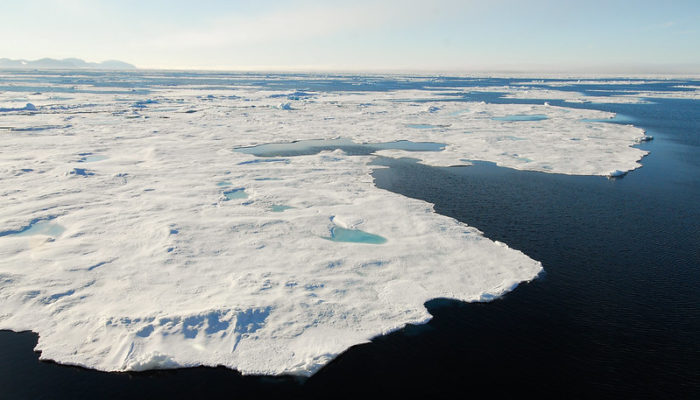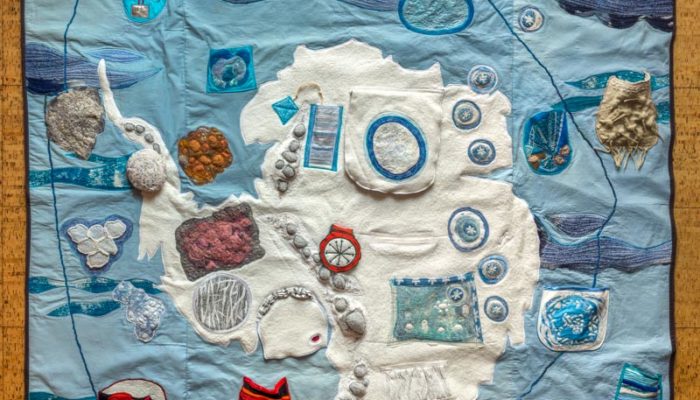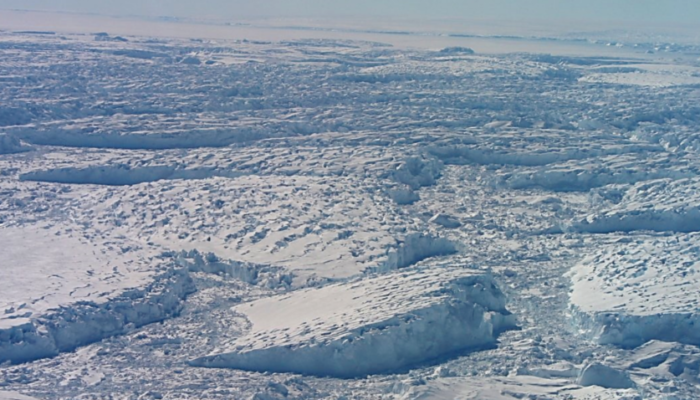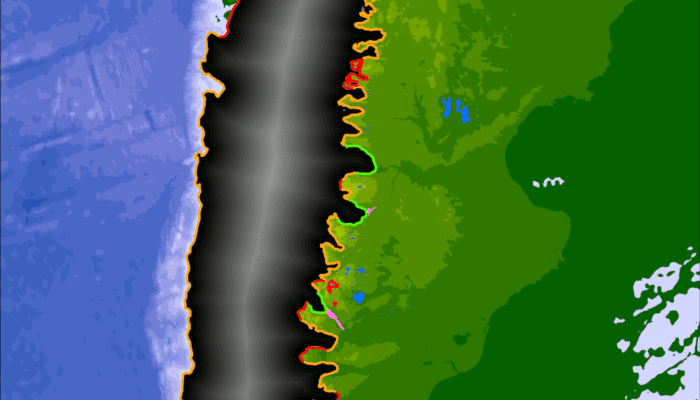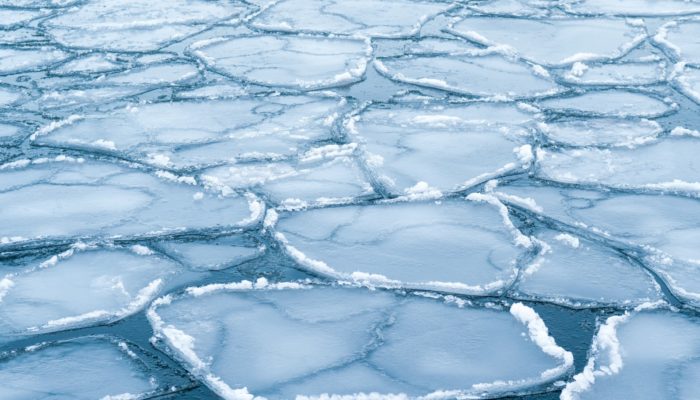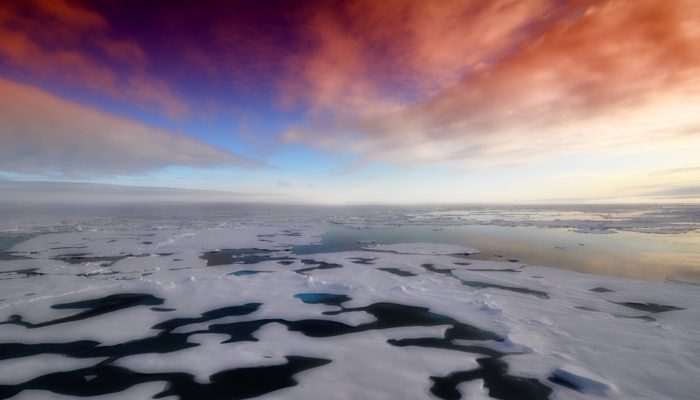Many glaciologists look forward to going on fieldtrips and then, once they are back, they make us dream by posting breathtaking photos (like THIS or THIS or THIS). However, the reality of the field can sometimes be very different…. The picture illustrates how difficult it can be to work on sea ice when the snow on top of it starts to melt and forms slush (a mixture of snow and liquid water t ...[Read More]
If you didn't find what you was looking for try searching again.
Cryospheric Sciences
Navigating the polar frontier: exploring the effects of sea-ice decline on shipping and sea routes in the Arctic
Sea ice is a critical part of the unique Arctic ecosystem, but climate change is becoming a serious threat. Warming in the Arctic has already resulted in the loss of over 4 million km² of sea ice. But is it all bad? Retreat of Arctic sea ice is allowing more ships to navigate the Arctic Ocean, along shorter, faster and cheaper sea routes, providing emission reductions of 24%. But will the growth o ...[Read More]
Cryospheric Sciences
You thought it was over? Here’s more on the 2023 Antarctic sea-ice extent record low
In November last year (see this post), we promised to provide you an update of what happened with Antarctic sea ice during the year 2023 – a year of an exceptionally low extent. In this post, we try our best to discuss the conditions that lead to (part of) the recent loss in Antarctic sea ice, including atmospheric and ocean processes. How sea ice usually works… One of the ways scientists h ...[Read More]
Cryospheric Sciences
Winds and Antarctic sea-ice cover: what is the role of human activities?
We may not often think about it, but climate in Antarctica can be very different depending on where we are exactly (do not expect palm trees though!). Winds play a big role in shaping these differences, which are reflected – among other things! – on sea ice. But how are these winds related to the large-scale atmospheric circulation, and are we having an impact on them? Dear readers, pl ...[Read More]
Cryospheric Sciences
Cryo-adventures: Ninja goes south – Life and science onboard an icebreaker in the Weddell Sea (Antarctica)
Hello there! I’m Ninja – a curious little LEGO-figure who doesn’t know much about the cryosphere, but who’s learning! Maybe you read about me in the blogpost by ice sheet modeler Petra Langebroek a few years ago? She brought me to the ice-core drilling camp called EASTgrip, on top of the Greenland icesheet. Together, we wrote a photo-novel to tell her sons and all of you about life and science at ...[Read More]
Cryospheric Sciences
The softness of ice, how we measure it, and why it matters for sea level rise
One of the first things school children learn is that ice is a solid, and forms by freezing water. Most people think of ice as brittle–have you ever dropped a slippery ice cube on the kitchen floor, and watch it break and shatter into many pieces? It may be surprising, then, to find that ice can also stretch and squeeze, like a ball of pizza dough! Once deformed, ice is then softer in certai ...[Read More]
Cryospheric Sciences
It’s not you, it’s me(lange): ice shelf break-up triggered by mélange and sea-ice loss
Between March and May 2007, a total of ~2,445 km2 (equivalent to over 17 football pitches) of ice mélange (a mixture of sea-ice types, icebergs and snow) and part of Voyeykov Ice Shelf in East Antarctica rapidly broke up. Observations of the timing and triggers of such events are relatively rare in East Antarctica, compared to ice shelves on the Antarctic Peninsula. Recent work highlights the impo ...[Read More]
Cryospheric Sciences
Seafloor secrets: traces of the past Patagonian ice sheet
Today’s Patagonian ice caps are confined to the high-altitude Andean Mountain range as the Northern and Southern Patagonia ice fields, and they are rapidly melting. The southern part of the Patagonian ice cap drains partially through fast-flowing ice streams into the fjords of Patagonia. Glaciers in this region have been losing ice at accelerating rates by large calving events, due to rising globa ...[Read More]
Cryospheric Sciences
Did you know… the difference between sea-ice area and sea-ice extent?
At the beginning of March, just over a month ago, sea ice in the Arctic reached its annual maximum extent. As currently all media attention is focused on other news, you might have missed that, once again, this maximum fell below the 1981 to 2010 average maximum extent. When reading headlines about such sea-ice facts, you may have been confused by the seemingly interchangeable use of “sea-ice exte ...[Read More]
Cryospheric Sciences
Climate Change & Cryosphere – Why is the Arctic sea-ice cover retreating?
The Arctic Ocean surface is darkening as its sea-ice cover is shrinking. The exact processes driving the ongoing sea-ice loss are far from being totally understood. In this post, we will investigate the different causes of the recent retreat of the Arctic sea-ice cover, using the most updated literature… Arctic sea ice is disappearing Due to its geographical position centered around the Nort ...[Read More]


